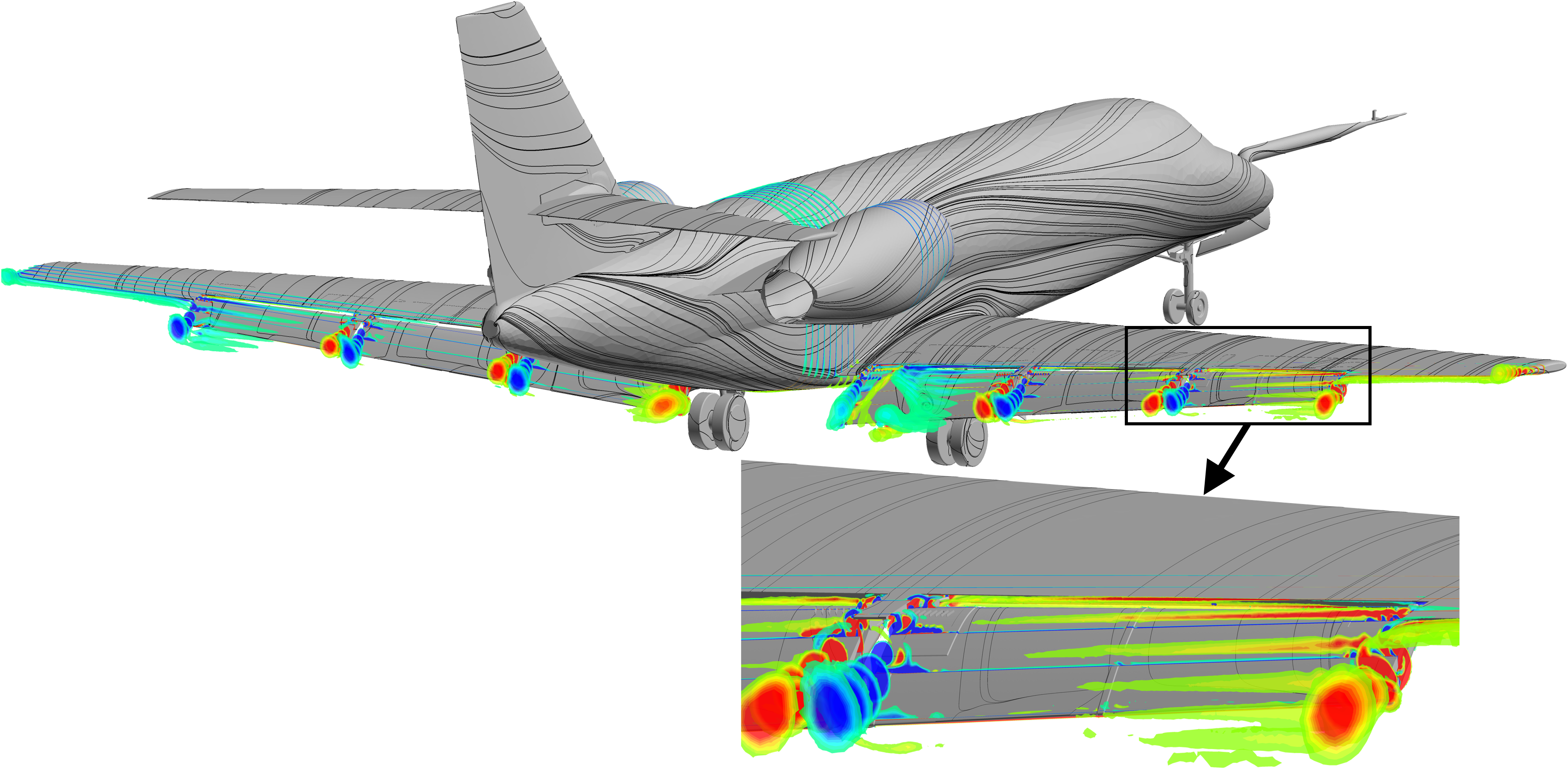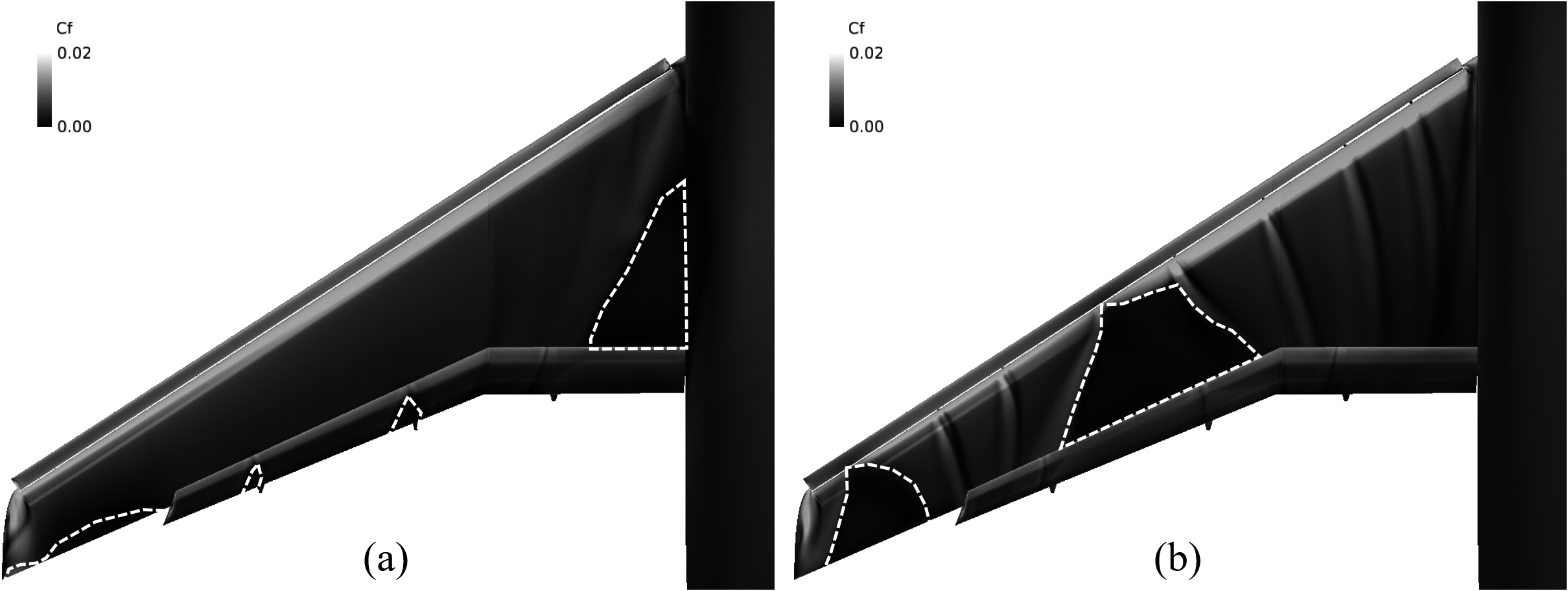Computational Simulations for Aircraft Modification Design in the FQUROH Project
JAXA Supercomputer System Annual Report April 2017-March 2018
Report Number: R17EA2800
Subject Category: Aeronautical Technology
- Responsible Representative: Kazuomi Yamamoto, FQUROH Project Team, Aeronautical Technology Directorate
- Contact Information: Kazuomi Yamamoto yamamoto.kazuomi@jaxa.jp
- Members: Kazuomi Yamamoto, Yasushi Ito, Takehisa Takaishi, Mitsuhiro Murayama, Ryotaro Sakai, Tohru Hirai, Kentaro Tanaka, Kazuhisa Amemiya, Gen Nakano, Takashi Ishida
Abstract
The FQUROH project aims at raising the technical maturity level of the noise reduction technology for high-lift devices and landing gear, which draws international attention to reduce noise in areas around airports, to a level applicable to future development of aircraft and related equipment. This contributes to reduction of aircraft noise in local communities around the airport and airline operating costs by reducing landing fee. One of the objectives of the FQUROH project is to verify the feasibility of practical noise reduction concepts and design methods based on advanced computational simulations through modification of aircraft. Computational simulations were performed as part of the FQUROH project to understand Reynolds number effects resulting from wind tunnel testing and to select low-noise and measuring devices that did not affect the flight performance of experimental aircraft in an expected flight envelop.
Reference URL
Reasons for using JSS2
The JSS2 enabled a large number of high-fidelity computational simulations with aerodynamically-important details in several flight configurations (flap deflection angle settings, landing gear positions, etc.) in the expected flight envelop (i.e., needs to consider several angles of attack, sideslip angles, etc.). The aerodynamic effect of low-noise and measuring devices was able to be evaluate and quantified, which was difficult only with wind tunnel tests.
Achievements of the Year
For the second flight demonstration on airframe noise reduction technologies, RANS results confirmed that the flight characteristics, flight performance and structure of JAXA’s jet research aircraft, “Hisho,” were not significantly affected by low-noise devices for the flaps and landing gear and pressure belts on the right outboard flap. RANS simulations were also performed for the JAXA Standard Model (JSM) to understand the aerodynamic characteristics of a high-lift configuration with a slat, such as flow separation induced by slat brackets.

Fig.1: Surface stream lines and x component of vorticity on cross-flow cross-sections around the flaps of Hisho gear-down, 35 degrees flap deflection angle configuration with flap and landing-gear low-noise devices and pressure belts on the right outboard flap f

Fig.2: Different stall patters with and without slat brackets of JSM wing/body configuration (images showing skin friction distributions and large flow separation indicated by white dashed lines): (a) stall caused by side-of-body flow separation without slat bra
Publications
■ Non peer-reviewed papers
1) Ito, Y., Murayama, M., Yamamoto, K. and Tanaka, K., “High-Fidelity Aerodynamic Analysis of Aircraft in Various Configurations with MEGG3D,” AIAA Paper 2017-3804, 23rd AIAA Computational Fluid Dynamics Conference, 2017, DOI: 10.2514/6.2017-3804.
2) Yamamoto, K., Takaishi, T., Murayama, M., Yokokawa, Y., Ito, Y., Arizono, H., Sakai, R., Shoji, H., Ueno, Y., Isotani, K., Lee, H.-H., Inoue, T. and Kumada, T., “FQUROH: A Flight Demonstration Project for Airframe Noise Reduction Technology – the 1st Flight Demonstration,” AIAA Paper 2017-4029, 23rd AIAA/CEAS Aeroacoustics Conference, Denver, CO, 2017, DOI: 10.2514/6.2017-4029.
3) Yokokawa, Y., Takaishi, T., Ura, H., Kohzai, M., Murayama, M., Ito, Y., Yamamoto, K., Isotani, K., Ueno, Y. and Hayama, K., “Acoustic Wind Tunnel Test with 18% scale Half-span Model toward FQUROH Flight Demonstration,” AIAA Paper 2017-4032, 23rd AIAA/CEAS Aeroacoustics Conference, 2017, DOI: 10.2514/6.2017-4032.
4) Ito, Y., Murayama, M., Yokokawa, Y., Yamamoto, K., Tanaka, K., Hirai, T., Yasuda, H., Tajima, A. and Ochi, A., “Japan Aerospace Exploration Agency’s and Kawasaki Heavy Industries’ Contribution to the Third High Lift Prediction Workshop,” AIAA Paper 2018-1034, 2018 AIAA Aerospace Sciences Meeting, Kissimmee, FL, 2018, DOI: 10.2514/6.2018-1034.
■ Presentations
1) Ito, Y., Murayama, M., Yamamoto, K., Tanaka, K. and Hirai, T., “TAS Code Results for the Third High Lift Prediction Workshop,” Presented at the 3rd AIAA CFD High Lift Prediction Workshop, Denver, CO, 2017.
■ URLs for the Research Results on the Web
1) 3rd AIAA CFD High Lift Prediction Workshop (HiLiftPW-3), https://hiliftpw.larc.nasa.gov/
Usage of JSS2
Computational Information
- Process Parallelization Methods: MPI
- Thread Parallelization Methods: OpenMP
- Number of Processes: 432
- Elapsed Time per Case: 25.00 hours
Resources Used
Fraction of Usage in Total Resources*1(%): 1.79
Details
Please refer to System Configuration of JSS2 for the system configuration and major specifications of JSS2.
| System Name | Amount of Core Time(core x hours) | Fraction of Usage*2(%) |
|---|---|---|
| SORA-MA | 14,807,705.37 | 1.96 |
| SORA-PP | 6,600.57 | 0.08 |
| SORA-LM | 8.12 | 0.00 |
| SORA-TPP | 0.00 | 0.00 |
| File System Name | Storage Assigned(GiB) | Fraction of Usage*2(%) |
|---|---|---|
| /home | 064.49 | 0.04 |
| /data | 9,930.81 | 0.18 |
| /ltmp | 2,682.33 | 0.20 |
| Archiver Name | Storage Used(TiB) | Fraction of Usage*2(%) |
|---|---|---|
| J-SPACE | 177.48 | 7.63 |
*1: Fraction of Usage in Total Resources: Weighted average of three resource types (Computing, File System, and Archiver).
*2: Fraction of Usage:Percentage of usage relative to each resource used in one year.
JAXA Supercomputer System Annual Report April 2017-March 2018


